Railways Passengers Comfort Evaluation through Motion Parameters: A Systematic Review
Abstract
:1. Introduction
2. Materials and Methods
2.1. Information Sources
2.2. Eligibility Criteria and Screening
3. Results
3.1. Dynamic Comfort Evaluation
3.1.1. Ride Comfort Analysis
3.1.2. Seat Effective Amplitude Transmissibility (SEAT)
3.1.3. Transmissibility
3.2. Static Evaluation
4. Discussion
5. Conclusions
Author Contributions
Funding
Data Availability Statement
Acknowledgments
Conflicts of Interest
Appendix A
| Year | Ref. | Comfort Evaluation | Factor | Elements Analysed | Experiment Type | Main Conclusions |
|---|---|---|---|---|---|---|
| 2023 | [55] | Transmissibility and Modal identification | -Transmissibility in rail conditions (effect of seat frame and foam) | Floor and seat (surface and seatback) | Rail environment experiment | -Lower transmissibility resonance peaks than laboratory experiments -Transmissibility depends on foam’s incapacity to absorb low vibration frequencies -Transmissibility depends on seat frame structure -Carbody natural frequencies influence transmissibility |
| 2022 | [2] | Ride comfort (ISO 2631, EN 12299, and Sperling’s method) | -Methods comparison | Floor | Rail environment experiment | -Numerical correlation between three ride comfort indexes |
| 2022 | [43] | Ride comfort (EN 12299 and Sperling’s method) | -Influence of track quality and wind load on comfort | Floor | Numerical simulation | -Track quality as neglective effect on comfort compared with wind load |
| 2022 | [45] | Not applicable | -Shock and vibration health effects | Not applicable | Not applicable | -Negative impact of vibration |
| 2021 | [23] | Ride comfort (ISO 2631) | -Effect of track -Influence of vibration direction | Seat (surface and backrest) | Rail environment experiment | -Vertical vibration mostly impacts discomfort -Tunnels and running speed have a significant influence on vibration discomfort |
| 2021 | [34] | Ride comfort (EN 12299 and Sperling’s method) | -Effect of speed -Effect of suspension | Floor | Numerical simulation | -Higher speeds lead to higher discomfort levels -Lower damping conducts to lower comfort levels |
| 2021 | [54] | Transmissibility | -Influence of bridges passing in transmissibility | Floor and seat surface | Numerical simulation | -Vertical transmissibility is equal to 4.3 Hz (1 DOF system) -Vertical transmissibility of the passenger-seat system is unrelated to the vehicle carbody natural frequencies |
| 2019 | [1] | Ride comfort (EN 12299 and Sperling’s method) | -Methods comparison | Floor | Rail environment experiment | -Sperling’s method revealed higher discomfort levels |
| 2019 | [25] | Ride comfort (ISO 2631) and transmissibility | -Effect of speed -Effect of track geometry -Identification of resonance peaks according to the direction | Floor and Seat (surface and backrest) | Rail environment experiment + Numerical simulation | -As speed increases, discomfort is influenced by track geometry, especially lateral direction -Vertical irregularities are the dominant cause of vibration discomfort -Seat surface vertical transmissibility: 5 Hz -Seatback longitudinal transmissibility: 12 Hz |
| 2019 | [41] | SEAT and Transmissibility | -Influence of vertical shocks transmission -Influence of foam thickness | Floor and seat surface (only foam) | Laboratory experiment | -Higher foam thickness increases vibration discomfort -Thicker foams have higher transmissibility resonances |
| 2019 | [18] | Ride comfort standard (China) | -Mechanical vibration and shock | Not applicable | Not applicable | -Evaluation of human exposure to whole-body vibration |
| 2018 | [32] | Ride comfort (EN 12299 and Sperling’s method) | -Methods comparison | Floor | Numerical simulation | -Sperling’s method revealed higher discomfort levels |
| 2018 | [38] | SEAT and Transmissibility | -Vibration transmission on train seats and the influence of vibration excitation | Floor and seat (surface and backrest) | Laboratory experiment | -Seat surface lateral and longitudinal transmissibility: 25 Hz -Seat surface vertical vibration: 3.8–5.0 Hz -Seat backrest, vertical and lateral transmissibility.: 24 Hz -Seat backrest longitudinal trans.: 4 Hz -Real vibration should be applied; otherwise, conclusions are invalid |
| 2017 | [33] | Ride comfort (EN 12299 and Sperling’s method) | -Methods comparison | Seat surface | Rail environment experiment | -Similar evaluation results for both methods |
| 2016 | [31] | Ride comfort | -Effect of speed | Floor | Numerical simulation | -Vehicle speed increases discomfort increases -Higher tilting angles lead to higher discomfort |
| 2015 | [28] | Ride comfort (ISO 2631, EN 12299, and Sperling’s method) | -Vibration comfort level | Floor | Numerical simulation | -Advantages and limitations of ride comfort methodologies |
| 2015 | [48] | Transmissibility | -Influence of subject’s variability (weight and height) -Influence of foam thickness | Foam (cushion and backrest) | Laboratory experiment | -Inter-subject variability does not influence transmissibility -Increasing foam thickness decreases vertical transmissibility resonances |
| 2014 | [40] | Transmissibility | -Influence of seatback foam and inclination on transmissibility | Foam (cushion and backrest) | Laboratory experiment | -Recline seat reduces discomfort -Rigid seats increase vibration magnitude transmission and discomfort |
| 2013 | [13] | Ride comfort (ISO 2631) and SEAT | -Method of measuring whole-body vibration | Floor and seat (surface and backrest) | Laboratory experiment | -Quantification of ride comfort according to ISO 2631 and VDV -Seat quantified with regard to SEAT |
| 2013 | [44] | Transmissibility | -Influence of soft seating on the apparent mass of the human body -Factors influencing seat dynamic response | Foam | Laboratory experiment | -Stiffness of foam tends to increase with increasing frequency of vibration -Vertical transmissibility around 5 Hz -Increasing magnitude of vibration produced significant reductions in the resonance frequency of the transmissibility |
| 2013 | [53] | Transmissibility | -Transmissibility in rail conditions | Floor and seat surface | Rail environment experiment + Numerical simulation | -Vertical transmissibility around 4.3 Hz (experimental and 1 DOF system) |
| 2013 | [17] | Ride comfort standard (USA) | -Mechanical vibration and shock | Not applicable | Not applicable | -Evaluation of human exposure to whole-body vibration |
| 2011 | [52] | SEAT and Transmissibility | -Influence of user anthropometric characteristics on vibration transmission | Floor and seat (surface and backrest) | Laboratory experiment | -Seat surface lateral and longitudinal transmissibility: 25 Hz -Seat surface vertical vibration: 3.8–5.0 Hz -Seat backrest vertical and lateral trans.: 24 Hz -Seat backrest longitudinal trans.: 4 Hz -No statistically significant correlations between subject mass (or body mass index) and SEAT values were found, so the subject’s anthropometric characteristics do not influence transmissibility |
| 2010 | [20] | Ride comfort (ISO 2631 and Sperling’s method) | -Influence of vibration direction -Methods comparison | Floor and seat (surface and backrest) | Rail environment experiment | -Influence of vertical vibration -Sperling’s index produced higher discomfort values than ISO 2631 |
| 2010 | [27] | Ride comfort (EN 12299) | -Track irregularity’s location | Floor | Numerical simulation | -Lack of possibility to correspond to the track irregularity’s location |
| 2007 | [22] | Ride comfort (ISO 2631) | -Influence of vibration direction and magnitude | Floor, seat (surface, backrest, and armrest), and table | Rail environment experiment | -Vibration is the main cause of disturbance and may lead to limitations in performing sedentary activities |
| 2007 | [37] | Ride comfort (ISO 2631) | -Influence of vibration direction | Seat surface | Numerical simulation | -Influence of vertical vibration direction |
| 2006 | [35] | Ride comfort (ISO 2631) | -Influence of vibration magnitude and direction | Floor and seat (surface and backrest) | Laboratory experiment | -Higher magnitude leads to higher discomfort -Main influence of vertical direction |
| 2006 | [39] | SEAT and Transmissibility | -Predict dynamic sitting comfort using SEAT and transmissibility | Seat (surface and seatback) | Laboratory experiment | -Good correlation between SEAT and vertical comfort -Seat surface vertical transmissibility around 5 Hz -Failed to identify seatback influence on dynamic comfort |
| 2006 | [16] | Ride comfort standard (Japan) | -Mechanical vibration and shock | Not applicable | Not applicable | -Evaluation of human exposure to whole-body vibration |
| 2005 | [19] | Not applicable | -Health risks of vibration | Not applicable | Not applicable | Not applicable |
| 2005 | [29] | Ride comfort (ISO 2631, EN 12299, and Sperling’s method) | -Influence of speed -Influence of rail condition -Influence of rail curvature | Floor | Rail environment experiment | -Speed and rail conditions significantly influenced vibration discomfort -Influence order: speed, rail condition, and rail curvature |
| 2003 | [42] | SEAT and Transmissibility | -Predict dynamic sitting comfort -Correlation between subjective and objective methods | Floor and seat (surface and backrest) | Laboratory experiment | -Correlation between SEAT objective and subjective results noticed promising results -Subject’s preferences were similar to the objective data measurements |
| 2002 | [30] | Ride comfort (ISO 2631) | -Influence of vibration direction | Floor and seat surface | Rail environment experiment | -Vertical vibration is the main cause of vibration discomfort |
| 2001 | [14,19] | ISO 2631 standard | -Mechanical vibration and shock | Not applicable | Not applicable | -Evaluation of human exposure to whole-body vibration |
| 2001 | [57] | Transmissibility and Foam properties (hysteresis loss) | -Influence of foam thickness | Foam | Laboratory experiment | -Thicker foams have higher transmissibility resonances -Hysteresis does not depend on the thickness |
| 2000 | [49] | Transmissibility | -Dynamic foam response | Foam | Laboratory experiment + Numerical simulation | -Higher compression does not influence transmissibility |
| 2000 | [56] | Transmissibility | -Influence of foam thickness and hardness | Foam | Laboratory experiment | -Thinner foam cushions were evaluated as significantly more uncomfortable than thicker foam cushions -Discomfort increased as vibration magnitude increased |
| 1999 | [15,26] | EN 12299 standard | -Ride comfort for passengers | Not applicable | Not applicable | -Measurement and evaluation |
| 1998 | [50] | Transmissibility | -Influence of increasing masses on transmissibility | Seat surface and foam | Laboratory experiment | -Higher mass (sandbags) compression does not influence transmissibility |
| 1990 | [21] | Not applicable | -Health risks of vibration | Not applicable | Not applicable | Not applicable |
| 1989 | [47] | Ride comfort (ISO2631) | -Evaluation factors of whole-body vibration | Seat | Not applicable | -Whole-body vibration analysis -Frequency weighting -Vibration measurement systems |
| 1977 | [51] | Transmissibility | -Dynamic characteristics of seat-human interaction | Floor and seat surface | Laboratory experiment | -Subjects weight and height does not influence vibration transmissibility |
| Year | Ref. | Comfort Evaluation | Factor | Elements Analysed | Experiment Type | Main Conclusions |
|---|---|---|---|---|---|---|
| 2020 | [58] | Transmissibility and Foam properties (hysteresis loss) | -Influence of crosslinking agent on transmissibility and hysteresis loss | Foam | Laboratory experiment | -Thinner cell wall, a lower wall area, and a thinner strut are advantageous in achieving lower vibration transmission -Low cell wall area ratios are required to obtain low hysteresis values |
| 2004 | [12] | Transmissibility and Interface pressure | Not applicable | Not applicable | Laboratory experiment | -Harmful consequences of vibration |
| 2003 | [36] | Ride comfort (ISO 2631) and Interface pressure | -Influence of subject’s weight in interface pressure -Comparison between the regular seat and air-cell seat | Foam | Laboratory experiment | -Heaviest subject presented higher maximum pressure -Regular seat demonstrated higher comfort levels for frequencies lower than 4.5 Hz, whereas the air-cell seat performed better between 4.5–8 Hz |
| 2001 | [9] | Transmissibility and Interface pressure | -Influence of foam density and hardness | Foam | Laboratory experiment | -Foam density does not influence transmissibility -Softer foams lead to higher comfort |
| Year | Ref. | Comfort Evaluation | Factor | Elements Analysed | Experiment Type | Main Conclusions |
|---|---|---|---|---|---|---|
| 2022 | [3] | Interface pressure | -Sitting duration influence on comfort | Seat (surface + backrest) | Laboratory experiment + Numerical simulation | -Higher sitting duration leads to higher discomfort levels |
| 2022 | [63] | Interface pressure | -Comfort degradation mechanism | Seat (surface and backrest) | Rail environment experiment | -Comfort depends on sitting time (after >20 min fatigue appears and comfort decreases) |
| 2021 | [69] | Interface pressure | -Influence of foam shape | Foam | Laboratory experiment | -Flat cushion shape is the most suitable for rail application |
| 2018 | [61] | Interface pressure | -Influence of BMI -Maximum pressure threshold | Foam | Laboratory experiment | -Normal subjects have higher comfort levels 43.50 mmHg pressure under the ischial tuberosities and 21.75 mmHg elsewhere -Mean pressure should never be above 37.75 mmHg |
| 2017 | [60] | Interface pressure | -Association between local comfort and whole-body comfort | Seat (surface and backrest) | Rail environment experiment | -Hips most influence whole-body discomfort |
| 2014 | [59] | Interface pressure | -Evaluation of express train sitting discomfort | Seat surface | Laboratory experiment | -High pressure on 2nd class seats -High pressure for thinner subjects |
| 2014 | [67] | Interface pressure | -Effect of knee angle -Influence of seat hardness | Seat surface | Laboratory experiment | -Increase angle decrease pressure around the ischial tuberosities and increase beneath the thighs -Softer seats lead to a higher contact area and higher comfort |
| 2012 | [64] | Interface pressure | -Association between subject posture and interface pressure | Seat (surface and backrest) | Laboratory experiment | -Widely distributed pressure leads to comfortable seats -Subjects tend to adjust their pressure when they feel fatigue |
| 2008 | [62] | Interface pressure | -Associations between interface pressure and subjective ratings | Seat surface | Laboratory experiment | -High correlation between subjective comfort rankings and objective evaluation - Contrary to de Looze et al., which found that interface pressure is more directly associated with discomfort |
| 2006 | [66] | Interface pressure | -Pressure map characteristics | Floor | Laboratory experiment | -Repeatability -Sensitivity -Temperature sensitivity -Hysteresis |
| 2003 | [65] | Interface pressure | -Relationship between interface pressure and gender, body mass index (BMI) | Seat (surface and backrest) | Laboratory experiment | -Average and maximum pressures are independent of gender -Average pressure had a significant positive correlation with BMI -Reclining the chair significantly reduced the average pressure |
| 1999 | [46] | Not applicable | - Occupational biomechanics | Not applicable | Not applicable | -Human biomechanics |
References
- Jiang, Y.; Chen, B.K.; Thompson, C. A comparison study of ride comfort indices between Sperling’s method and EN 12299. Int. J. Rail Transp. 2019, 7, 279–296. [Google Scholar] [CrossRef]
- Kim, Y.G.; Kwon, H.B.; Kim, S.W.; Kim, C.K.; Kim, T.W. Correlation of ride comfort evaluation methods for railway vehicles. Proc. Inst. Mech. Eng. Part F J. Rail Rapid Transit 2003, 217, 73–88. [Google Scholar] [CrossRef]
- Yuxue, B.; Bingchen, G.; Jianjie, C.; Wenzhe, C.; Hang, Z.; Chen, C. Sitting comfort analysis and prediction for high-speed rail passengers based on statistical analysis and machine learning. Build. Environ. 2022, 225, 109589. [Google Scholar] [CrossRef]
- Vink, P.; Hallbeck, S. Editorial: Comfort and discomfort studies demonstrate the need for a new model. Appl. Ergon. 2012, 43, 271–276. [Google Scholar] [CrossRef] [PubMed]
- Zhang, L.; Helander, M.; Kumar, S. Identifying Factors of Comfort and Discomfort: A Multidisciplinary Approach. In Advances in Industrial Ergonomics and Safety IV; Taylor & Francis: Milton Park, UK, 1992; pp. 395–402. [Google Scholar]
- Zhang, L.; Helander, M.G.; Drury, C.G. Identifying Factors of Comfort and Discomfort in Sitting. Hum. Factors 1996, 38, 377–389. [Google Scholar] [CrossRef]
- De Looze, M.P.; Kuijt-Evers, L.F.M.; Van Dieën, J. Sitting comfort and discomfort and the relationships with objective measures. Ergonomics 2003, 46, 985–997. [Google Scholar] [CrossRef]
- Mastrigt, S.H.-V.; Groenesteijn, L.; Vink, P.; Kuijt-Evers, L.F.M. Predicting passenger seat comfort and discomfort on the basis of human, context and seat characteristics: A literature review. Ergonomics 2016, 60, 889–911. [Google Scholar] [CrossRef]
- Ebe, K.; Griffin, M. Factors affecting static seat cushion comfort. Ergonomics 2001, 44, 901–921. [Google Scholar] [CrossRef]
- Ebe, K.; Griffin, M. Quantitative prediction of overall seat discomfort. Ergonomics 2000, 43, 791–806. [Google Scholar] [CrossRef]
- Moher, D.; Liberati, A.; Tetzlaff, J.; Altman, D.G. Preferred reporting items for systematic reviews and meta-analyses: The PRISMA statement. PLoS Med. 2009, 6, e1000097. [Google Scholar] [CrossRef]
- Hostens, I. Analysis of Seating during Low Frequency Vibration Exposure. Ph.D. Thesis, Katholieke Universiteit Leuven, Leuven, Belgium, 2004. [Google Scholar]
- Park, S.J.; Subramaniyam, M. Evaluating Methods of Vibration Exposure and Ride Comfort in Car. J. Ergon. Soc. Korea 2013, 32, 381–387. [Google Scholar] [CrossRef]
- BS ISO 2631; Mechanical Vibration and Shock. Evaluation of Human Exposure to Whole-Body Vibration. British Standards Institution: London, UK; International Standard Organization: Geneva, Switzerland, 2001.
- BS EN 12299; Railway Applications—Ride Comfort for Passengers—Measurement and Evaluation. British Standards Institution: London, UK; European Committee for Standardization: Brussels, Belgium; British Standards Policy and Strategy Committee: London, UK, 2009.
- Railway Technical Research Institute. Outline of Design Standards for Railway Structures and Commentary (Displacement Limits); Railway Technical Research Institute: Tokyo, Japan, 2006. [Google Scholar]
- ANSI/ASCE/T&DI 21-13; Automated People Mover Standards. American Society of Civil Engineers: Reston, VA, USA, 2013.
- GB/T 5599-2019; Specification for Dynamic Performance Assessment and Testing Verification of Rolling Stock. People’s Republic of China National Railway Administration: Beijing, China, 2019.
- Bovenzi, M. Health effects of mechanical vibration. G. Ital. Med. Lav. Erg. 2005, 27, 58–64. [Google Scholar]
- Năstac, S.; Picu, M. Evaluating Methods of Whole-Body-Vibration Exposure in Trains. Ann.“Dunarea De Jos” Univ. Galati, Fasc. XIV Mech. Eng 2 2010, 14, 55–60. [Google Scholar]
- Griffin, M.J.; Erdreich, J. Handbook of Human Vibration; Academic Press: London, UK, 1990. [Google Scholar] [CrossRef]
- Khan, S.; Sundstrom, J. Effects of vibration on sedentary activities in passenger trains. J. Low Freq. Noise Vib. Act. Control 2007, 26, 43–55. [Google Scholar] [CrossRef]
- Peng, Y.; Wu, Z.; Fan, C.; Zhou, J.; Yi, S.; Peng, Y.; Gao, K. Assessment of passenger long-term vibration discomfort: A field study in high-speed train environments. Ergonomics 2021, 65, 659–671. [Google Scholar] [CrossRef]
- ISO 2631; Mechanical Vibration and Shock—Evaluation of Human Exposure to Whole-Body Vibration. International Standard Organization: Geneva, Switzerland, 2001.
- Liu, C.; Thompson, D.; Griffin, M.J.; Entezami, M. Effect of train speed and track geometry on the ride comfort in high-speed railways based on ISO 2631-1. Proc. Inst. Mech. Eng. F J. Rail. Rapid. Transit. 2020, 234, 765–778. [Google Scholar] [CrossRef]
- EN 12299; Railway Applications—Ride Comfort for Passengers—Measurement and Evaluation. European Committee for Standardization: Brussels, Belgium, 1999.
- Kufver, B.; Persson, R.; Wingren, J. Certain aspects of the CEN standard for the evaluation of ride comfort for rail passengers. WIT Trans. Built Environ. 2010, 114, 605–614. [Google Scholar] [CrossRef]
- Darlton, A.O.; Marinov, M. Suitability of Tilting Technology to the Tyne and Wear Metro System. Urban Rail Transit 2015, 1, 47–68. [Google Scholar] [CrossRef]
- Karakasis, K.; Skarlatos, D.; Zakinthinos, T. A factorial analysis for the determination of an optimal train speed with a desired ride comfort. Appl. Acoust. 2005, 66, 1121–1134. [Google Scholar] [CrossRef]
- Johanning, E.; Fischer, S.; Christ, E.; Göres, B.; Landsbergis, P. Whole-body vibration exposure study in U.S. railroad locomotives—An ergonomic risk assessment. Am. Ind. Hyg. Assoc. J. 2002, 63, 439–446. [Google Scholar] [CrossRef]
- Cheng, Y.C.; Hsu, C.T. Parametric Analysis of Ride Comfort for Tilting Railway Vehicles Running on Irregular Curved Tracks. Int. J. Struct. Stab. Dyn. 2016, 16, 1550056. [Google Scholar] [CrossRef]
- Dumitriu, M.; Leu, M. Correlation between Ride Comfort Index and Sperling’s Index for Evaluation Ride Comfort in Railway Vehicles. Appl. Mech. Mater. 2018, 880, 201–206. [Google Scholar] [CrossRef]
- Munawir, T.I.T.; Abu Samah, A.A.; Rosle, M.A.A.; Azlis-Sani, J.; Hasnan, K.; Sabri, S.; Ismail, S.; Yunos, M.N.A.M.; Bin, T.Y. A Comparison Study on the Assessment of Ride Comfort for LRT Passengers. IOP Conf. Ser. Mater. Sci. Eng. 2017, 226, 012039. [Google Scholar] [CrossRef]
- Dumitriu, M.; Stănică, D.I. Study on the evaluation methods of the vertical ride comfort of railway vehicle—Mean comfort method and sperling’s method. Appl. Sci. 2021, 11, 3953. [Google Scholar] [CrossRef]
- Schust, M.; Blüthner, R.; Seidel, H. Examination of perceptions (intensity, seat comfort, effort) and reaction times (brake and accelerator) during low-frequency vibration in x- or y-direction and biaxial (xy-) vibration of driver seats with activated and deactivated suspension. J. Sound. Vib. 2006, 298, 606–626. [Google Scholar] [CrossRef]
- Hong, K.-T.; Hwang, S.-H.; Hong, K.-S. Automotive Ride-Comfort Improvement with an Air Cushion Seat. In Proceedings of the SICE Annual Conference, Fukui University, Fukui, Japan, 4–6 August 2003; pp. 2043–2048. [Google Scholar]
- Bonin, G.; Cantisani, G.; Loprencipe, G.; Sbrolli, M. Ride Quality Evaluation: 8 D.O.F. Vehicle Model Calibration. In Proceedings of the 4th INTERNATIONAL SIIV CONGRESS, Palermo, Italy, 12–14 September 2007. [Google Scholar]
- Gong, W.; Griffin, M.J. Measuring, evaluating and assessing the transmission of vibration through the seats of railway vehicles. Proc. Inst. Mech. Eng. F J. Rail. Rapid Transit. 2018, 232, 384–395. [Google Scholar] [CrossRef]
- Van der Westhuizen, A.; Van Niekerk, J.L. Verification of seat effective amplitude transmissibility (SEAT) value as a reliable metric to predict dynamic seat comfort. J. Sound Vib. 2006, 295, 1060–1075. [Google Scholar] [CrossRef]
- Basri, B.; Griffin, M.J. The application of SEAT values for predicting how compliant seats with backrests influence vibration discomfort. Appl. Ergon. 2014, 45, 1461–1474. [Google Scholar] [CrossRef]
- Patelli, G.; Griffin, M.J. Effects of seating on the discomfort caused by mechanical shocks: Measurement and prediction of SEAT values. Appl. Ergon. 2019, 74, 134–144. [Google Scholar] [CrossRef]
- Van Niekerk, J.L.; Pielemeier, W.J.; Greenberg, J.A. The use of seat effective amplitude transmissibility (SEAT) values to predict dynamic seat comfort. J. Sound Vib. 2003, 260, 867–888. [Google Scholar] [CrossRef]
- Montenegro, P.; Ribeiro, D.; Ortega, M.; Millanes, F.; Goicolea, J.; Zhai, W.; Calçada, R. Impact of the train-track-bridge system characteristics in the runnability of high-speed trains against crosswinds—Part II: Riding comfort. J. Wind Eng. Ind. Aerodyn. 2022, 224, 104987. [Google Scholar] [CrossRef]
- Tufano, S.; Griffin, M. Nonlinearity in the vertical transmissibility of seating: The role of the human body apparent mass and seat dynamic stiffness. Veh. Syst. Dyn. 2013, 51, 122–138. [Google Scholar] [CrossRef]
- Harris, C.; Piersol, A. Harris’ Shock and Vibration Handbook; McGraw-Hill: New York, NY, USA, 2002. [Google Scholar]
- Chaffin, D.; Anderson, G.; Martin, B. Occupational Biomechanics; John Wiley & Sons: New York, NY, USA, 1999. [Google Scholar]
- Bruel & Kjaer. Primer: Human Vibration, Booklet; K. Larsen & Son: Naerum, Denmark, 1989. [Google Scholar]
- Zhang, X.; Qiu, Y.; Griffin, M. Transmission of vertical vibration through a seat: Effect of thickness of foam cushions at the seat pan and the backrest. Int. J. Ind. Ergon. 2015, 48, 36–45. [Google Scholar] [CrossRef]
- White, S.W.; Kim, S.K.; Bajaj, A.K.; Davies, P.; Showers, D.K.; Liedtke, P.E. Experimental techniques and identification of nonlinear and viscoelastic properties of flexible polyurethane foam. Nonlinear Dyn. 2000, 22, 281–313. [Google Scholar] [CrossRef]
- Wei, L.; Griffin, M. The prediction of seat transmissibility from measures of seat impedance. J. Sound Vib. 1998, 214, 121–137. [Google Scholar] [CrossRef]
- Varterasian, J.; Thompson, R. The dynamic characteristics of automobile seats with human occupants. SAE Transactions 1977, 86, 1173–1182. [Google Scholar]
- Toward, M.G.R.; Griffin, M.J. The transmission of vertical vibration through seats: Influence of the characteristics of the human body. J. Sound Vib. 2011, 330, 6526–6543. [Google Scholar] [CrossRef]
- Ribeiro, D.; Calçada, R.; Delgado, R.; Brehm, M.; Zabel, V. Finite-element model calibration of a railway vehicle based on experimental modal parameters. Veh. Syst. Dyn. 2013, 51, 821–856. [Google Scholar] [CrossRef]
- Ribeiro, D.; Costa, B.; Cruz, L.; Oliveira, M.; Alves, V.; Montenegro, P.; Calçada, R. Simulation of the Dynamic Behavior of a Centenary Metallic Bridge under Metro Traffic Actions Based on Advanced Interaction Models. Int. J. Struct. Stab. Dyn. 2021, 21, 2150057. [Google Scholar] [CrossRef]
- Silva, P.; Ribeiro, D.; Mendes, J.; Seabra, E. Modal Identification of Train Passenger Seats Based on Dynamic Tests and Output-Only Techniques. Appl. Sci. 2023, 13, 2277. [Google Scholar] [CrossRef]
- Ebe, K.; Griffin, M.J. Qualitative models of seat discomfort including static and dynamic factors. Ergonomics 2000, 43, 771–790. [Google Scholar] [CrossRef]
- Neal, B.L. Dynamic Property Response of Polyurethane Foam as a Function of Test Frequency. J. Mater. Manuf. 2001, 110, 168–177. [Google Scholar] [CrossRef]
- Choi, H.J.; Kim, J.H. Static and dynamic comfort properties of polyurethane foams including a flexible amine crosslinker. J. Ind. Eng. Chem. 2020, 90, 260–265. [Google Scholar] [CrossRef]
- Park, S.J.; Min, S.N.; Lee, H.; Subramaniyam, M.; Suh, W.S. Express Train Seat Discomfort Evaluation using Body Pressure and Anthropometric Data. J. Ergon. Soc. Korea 2014, 33, 215–227. [Google Scholar] [CrossRef]
- Xu, Z.; Yuan, Q.; Huang, S.; Zhang, Z.; He, Y. Analysis of partial-body and whole-body static sitting comfort. J. Vibroengineering 2017, 19, 3797–3808. [Google Scholar] [CrossRef]
- Hu, L.; Tor, O.; Duan, P.; Zhang, J.; Xu, X. Effect of Body Mass Index on Sitting Pressure Distribution on Seat Cushion. In Advances in Ergonomics in Design Proceedings of the AHFE; Rebelo, F., Soares, M., Eds.; Springer: Orlando, FL, USA, 2018. [Google Scholar] [CrossRef]
- Kyung, G.; Nussbaum, M.A. Driver sitting comfort and discomfort (part II): Relationships with and prediction from interface pressure. Int. J. Ind. Ergon. 2008, 38, 526–538. [Google Scholar] [CrossRef]
- Peng, Y.; Sun, D.; Fan, C.; Wu, Z.; Yi, S.; Peng, Y.; Liu, Y. Research on the comfort degradation mechanism of high-speed railway passengers: A field study using dynamic interface pressure. Transp. Saf. Environ. 2022, 4, 1–13. [Google Scholar] [CrossRef]
- Ciaccia, F.R.D.A.S.; Sznelwar, L.I. An approach to aircraft seat comfort using interface pressure mapping. Work 2012, 41, 240–245. [Google Scholar] [CrossRef]
- Stinson, M.D.; Porter-Armstrong, A.; Eakin, P. Seat-interface pressure: A pilot study of the relationship to gender, body mass index, and seating position. Arch. Phys. Med. Rehabil. 2003, 84, 405–409. [Google Scholar] [CrossRef]
- Kärki, S.; Lekkala, J. Pressure Mapping System for Physiological Measurements. In Proceedings of the 18th IMEKO World Congress 2006: Metrology for a Sustainable Development, Rio de Janeiro, Brazil, 17–22 September 2006; Volume 3, pp. 2247–2251. [Google Scholar]
- Akgunduz, A.; Rakheja, S.; Tarczay, A. Distributed occupant-seat interactions as an objective measure of seating comfort. Int. J. Veh. Des. 2014, 65, 293. [Google Scholar] [CrossRef]
- ISO 2439; Flexible cellular polymeric materials—Determination of hardness (indentation technique). International Standard Organization: Geneva, Switzerland, 2009.
- Tang, Z.; Liu, Z.; Tang, Y.; Dou, J.; Xu, C.; Wang, L. Model construction and analysis of ride comfort for high-speed railway seat cushions. Work 2021, 68, S223–S229. [Google Scholar] [CrossRef] [PubMed]
- Hirao, A.; Naito, S.; Yamazaki, N. Pressure Sensitivity of Buttock and Thigh as a Key Factor for Understanding of Sitting Comfort. Appl. Sci. 2022, 12, 7363. [Google Scholar] [CrossRef]
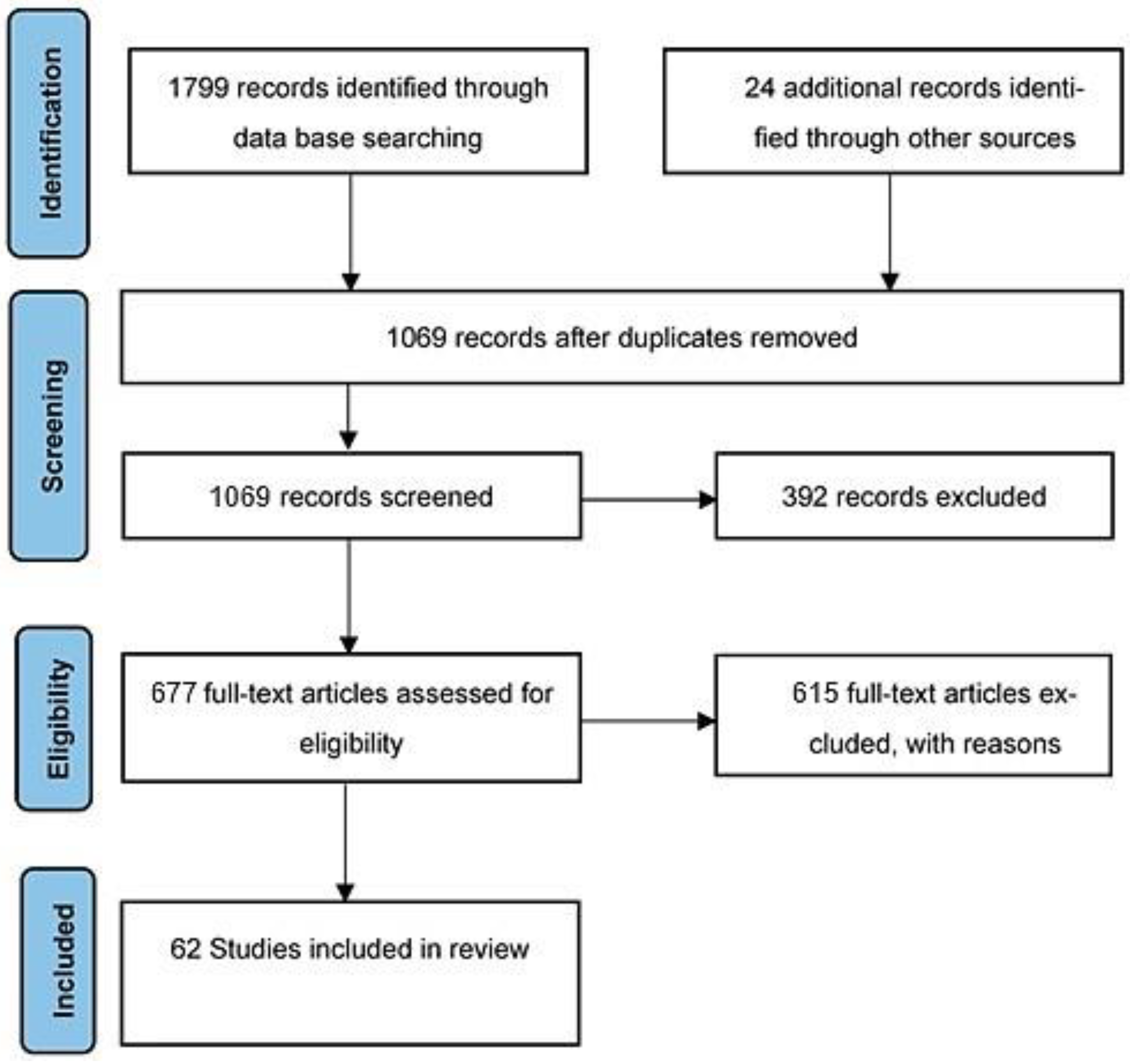
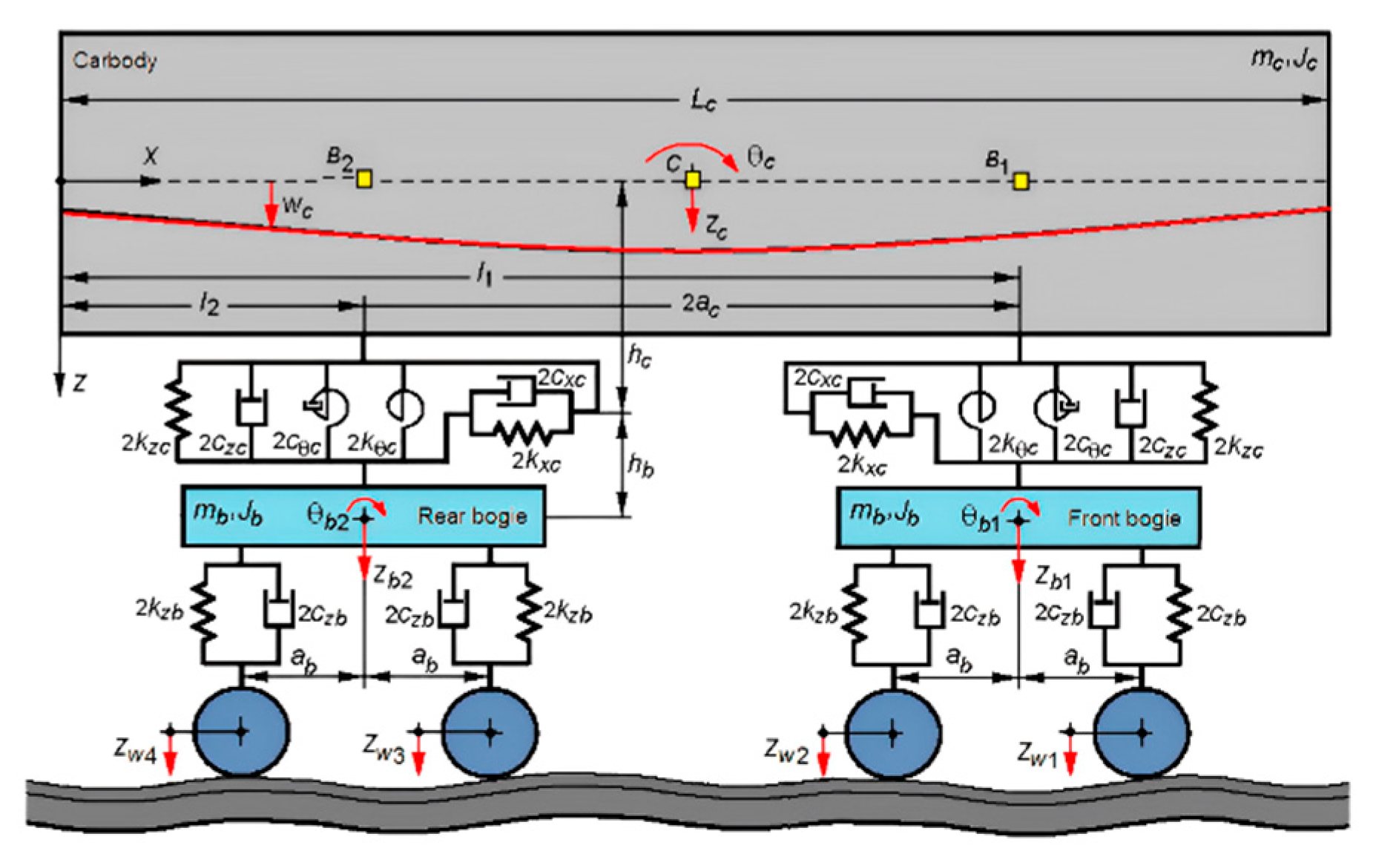
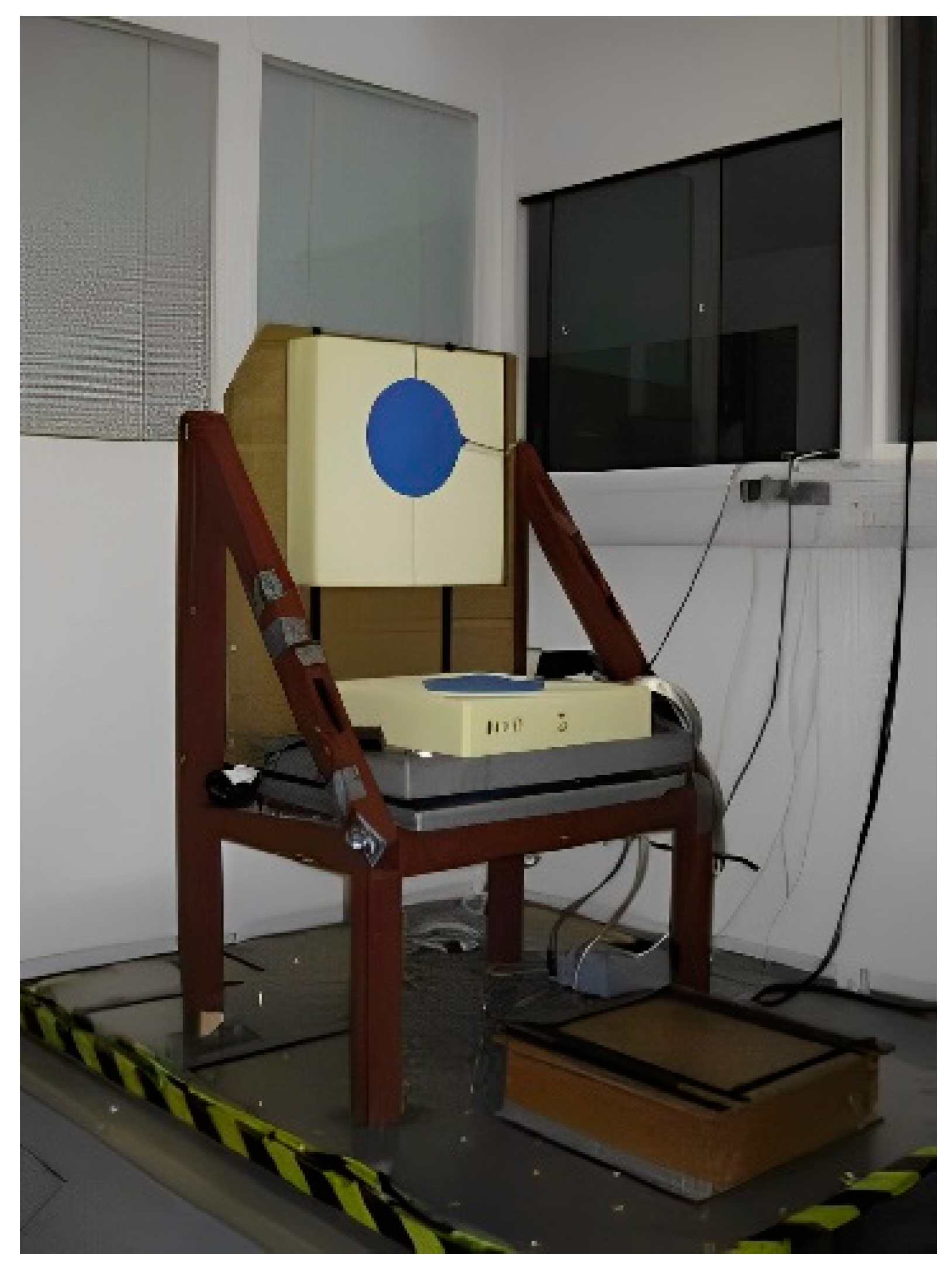

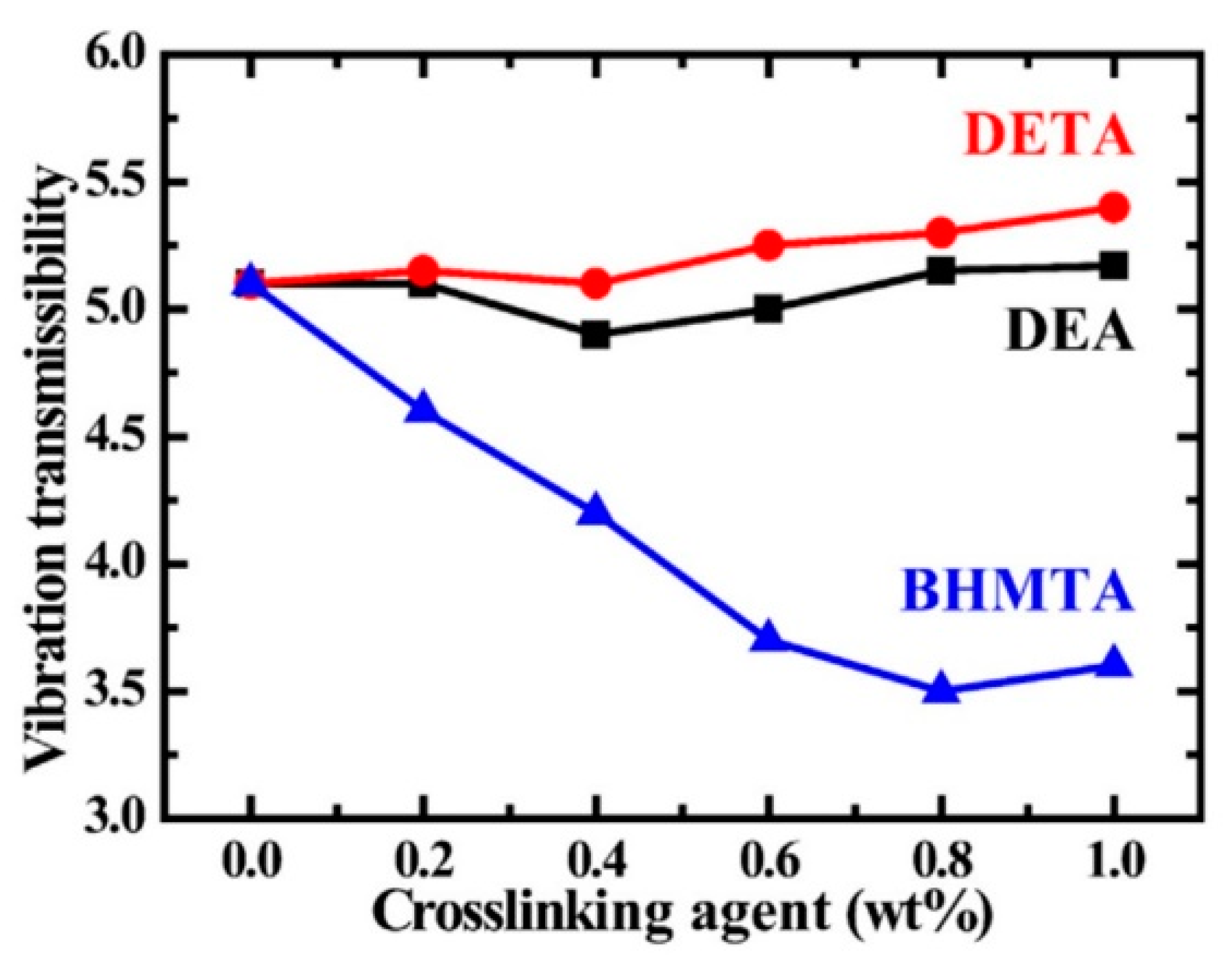

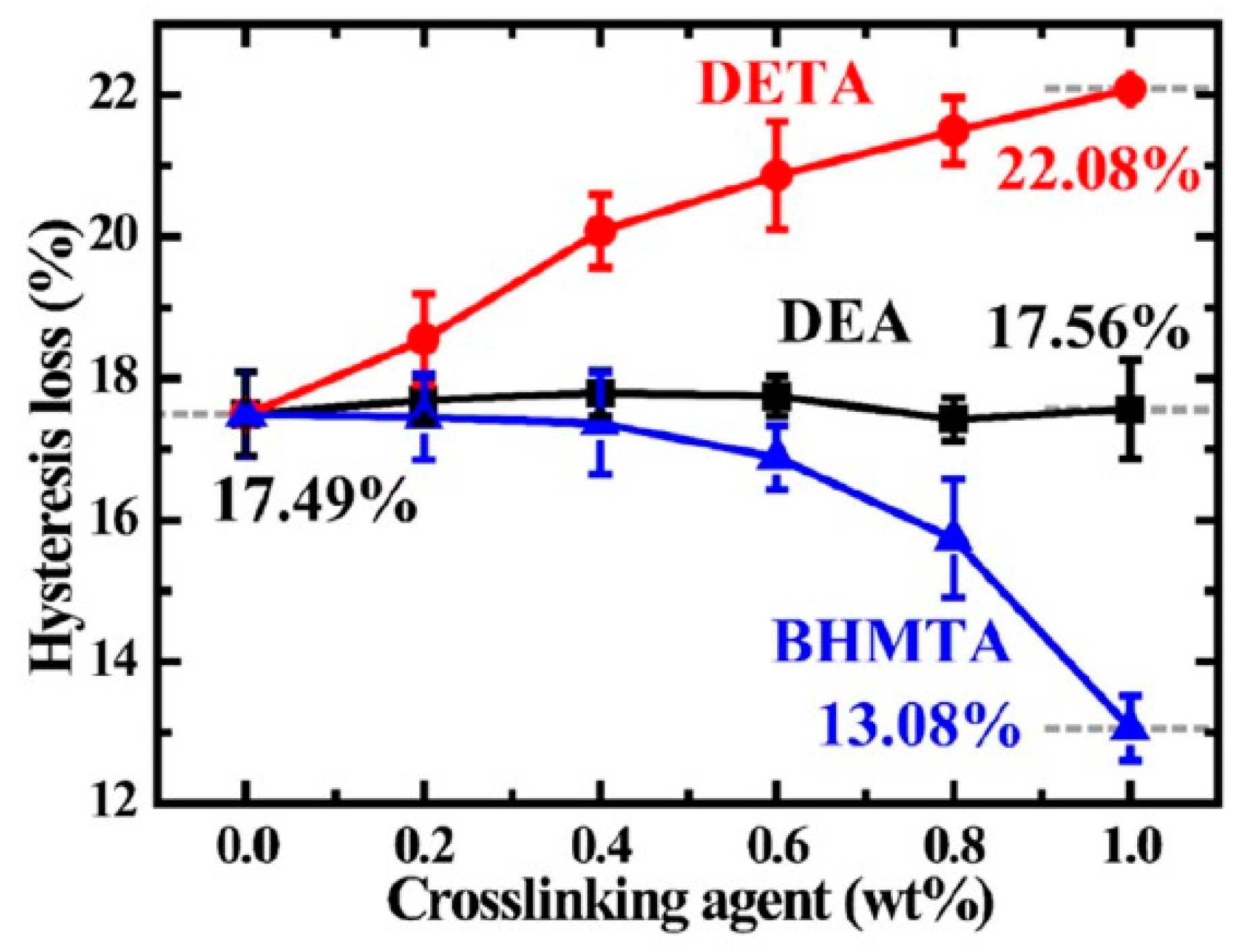
| X-Axis | Y-Axis | Z-Axis | |
|---|---|---|---|
| Floor | Wk and kx = 0.25 | Wk and ky = 0.25 | Wk and kz = 0.40 |
| Seat surface | Wd and kx = 1.0 | Wd and ky = 1.0 | Wk and kz = 1.0 |
| Seatback | Wc and kx = 0.80 | Wd and ky = 0.50 | Wd and kz = 0.40 |
| Ride Comfort | |
|---|---|
| ≤0.315 | Not uncomfortable |
| 0.5–0.63 | Little uncomfortable |
| 0.63–0.8 | Little uncomfortable to fairly uncomfortable |
| 0.8–1.0 | Fairly uncomfortable to uncomfortable |
| 1.0–1.25 | Uncomfortable |
| 1.25–1.6 | Uncomfortable to very uncomfortable |
| 1.6–2.0 | Very uncomfortable |
| 2.0–2.5 | Very uncomfortable to extremely uncomfortable |
| ≥2.5 | Extremely uncomfortable |
| NMV | Ride Comfort |
|---|---|
| ≤1 | Very comfortable |
| 1–2 | Comfortable |
| 2–4 | Medium |
| 4–5 | Uncomfortable |
| ≥5 | Very uncomfortable |
| Ride Comfort | |
|---|---|
| 1 | Just noticeable |
| 2 | Clearly noticeable |
| 2.5 | More pronounced but not unpleasant |
| 3 | Strong, irregular but still tolerable |
| 3.25 | Very irregular |
| 3.5 | Extremely irregular, unpleasant, annoying; prolonged exposure intolerable |
| 4 | Extremely unpleasant; prolonged exposure harmful |
Disclaimer/Publisher’s Note: The statements, opinions and data contained in all publications are solely those of the individual author(s) and contributor(s) and not of MDPI and/or the editor(s). MDPI and/or the editor(s) disclaim responsibility for any injury to people or property resulting from any ideas, methods, instructions or products referred to in the content. |
© 2023 by the authors. Licensee MDPI, Basel, Switzerland. This article is an open access article distributed under the terms and conditions of the Creative Commons Attribution (CC BY) license (https://creativecommons.org/licenses/by/4.0/).
Share and Cite
Silva, P.; Ribeiro, D.; Mendes, J.; Seabra, E.A.R.; Postolache, O. Railways Passengers Comfort Evaluation through Motion Parameters: A Systematic Review. Machines 2023, 11, 465. https://doi.org/10.3390/machines11040465
Silva P, Ribeiro D, Mendes J, Seabra EAR, Postolache O. Railways Passengers Comfort Evaluation through Motion Parameters: A Systematic Review. Machines. 2023; 11(4):465. https://doi.org/10.3390/machines11040465
Chicago/Turabian StyleSilva, Patricia, Diogo Ribeiro, Joaquim Mendes, Eurico Augusto Rodrigues Seabra, and Octavian Postolache. 2023. "Railways Passengers Comfort Evaluation through Motion Parameters: A Systematic Review" Machines 11, no. 4: 465. https://doi.org/10.3390/machines11040465





